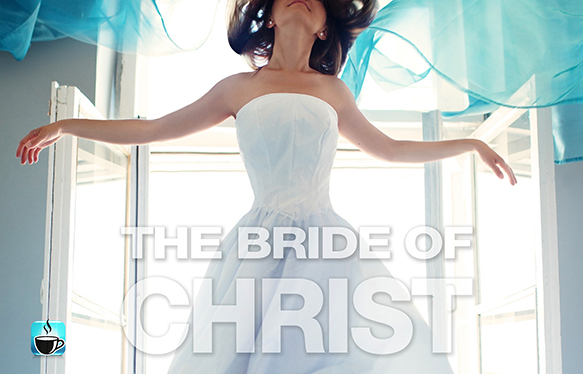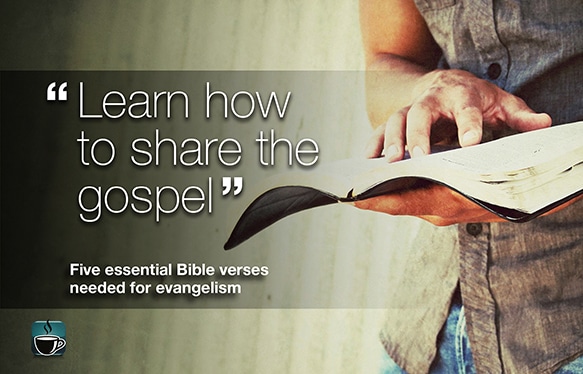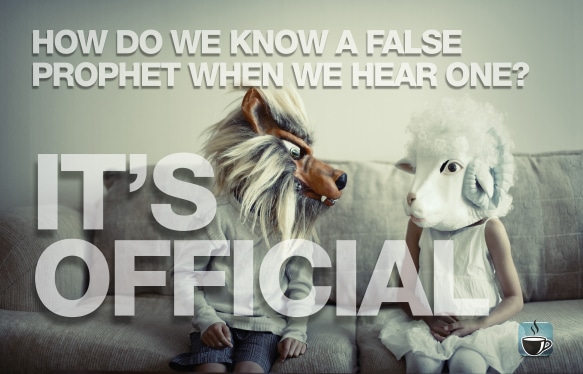From sex scandals, demonic doctrines, and song lyrics, to disturbing MTV, should Christians avoid Hillsong?
The Bride of Christ
The Rapture and the Jewish Wedding Ceremony
The Marriage, the Bride and the Rapture
John 14:2-3 – King James Version (KJV)
2 In my Father’s house are many mansions: if it were not so, I would have told you. I go to prepare a place for you.3 And if I go and prepare a place for you, I will come again, and receive you unto myself; that where I am, there ye may be also.
Let’s Describe the Ancient Jewish Wedding
The groom would go to the home of the bride where the contractual betrothal would take place. This was not the full marriage. There was no consummation or living together yet. The groom would pay the price required for his bride. He would then go back to his father’s house to prepare a room and make the arrangements for the full wedding.
The groom would prepare a wedding chamber at his father’s house, which is where he will bring his bride for the full consummation of the marriage later on. The bride and groom would stay in this temporary dwelling for seven days.
This temporary dwelling is called the Chuppah, but bears no resemblance to the Chuppah used today. Back in those days it was a lot more elaborate and was sealed from view to anyone outside.
The groom would only leave the father’s house to fetch his bride once the father had approved of the preparations made by the son. It was only the father that knew the specific instant in time when everything suited him and all was ready.
The father would then send the son and the last trump would sound to mark the event and the fact that everything was in place for the wedding.
All during this time, the bride was considered to be consecrated, set apart and bought with a price, but still awaiting the completion of the marriage.
The groom would then leave the father’s house and come and fetch his bride to take her to his father’s house, where she would be adorned and made ready for the marriage consummation. The bride would not know the exact time, nor the day or hour of the groom’s coming. However, she knew the approximate time. She would need to be ready as the time approached.
Watchmen would go onto the roof of the bride’s house close to the expected time, to watch for the bridegroom’s arrival. The watchmen would then shout—“Behold the bridegroom is coming,” and blow
the shofar.
The groom would take his bride and they would then go into “hiding” back at the father’s house, in the secluded, Chuppah for seven days where the marriage would be fully consummated.
Only after the full marriage consummation for seven days, would the groom bring his wife out for all to see.
After the marriage in the father’s house, the bride accompanied by ten virgins carrying tall beams with oil lamps on the top, would be carried on an “aparion” (a sedan chair in Hebrew) to meet the guests.
Unlike today, this ancient Hebrew wedding had two parts to it. The first stage was called “Kiddushin,” which was the contractual betrothal, in which the couple were seen and rendered fully fledged bride and groom, but the marriage was not yet consummated, and they were not permitted to live together yet.
Then came the “Nisu’in” or the consummation of the marriage under one roof (the Chuppah). The Chuppah has the distinct meaning of place contained within it. The word “Chuppah” means a covering of protection or hiding.
Summary of the Ancient Jewish Wedding
- The groom goes to the bride in betrothal:
– This is a type (or type of symbol) of our salvation. - He would pay the price required for the bride:
– This is a type of the cross of Calvary. - He would then go back to the father’s house to make preparations:
– This is a type of our Lord’s return to heaven and his waiting and preparing for us. - He would then leave the father’s house and come to fetch his bride:
– This is a type of the rapture. - She would then be adorned and made ready:
– This is a type of the rewarding of the saints in heaven during the Judgment Seat (Bema) of Christ, where Saints (the Church) will receive heavenly rewards for acts while previously on earth. - The marriage consummation would be a private affair in the Chuppah for seven days:
– This is a type of the marriage itself being fully and forever consummated in heaven for seven days, which is also a type of the seven-year tribulation, that will be in progress on earth while the bride (the Church) is in heaven with the bridegroom (Christ). - Watchmen on the roof awaiting the return of the now-married bride would watch and declared the arrival:
– This is a type of the second coming of the Lord with his own, to be met by the tribulation saints1 which are the wedding guests.
Further understanding the parallels
We must not mix up these idioms and types of symbols:
- We have the groom, who is our Lord himself;
- We have the bride, which is the true, born-again Church;
- We have the wedding guests who are the tribulation saints1 (again, please see notes below), or those saved in the tribulation period;
- There is a wedding contract or betrothal (not the full marriage);
- There is the marriage ceremony, which occurred privately;
- There is the wedding feast know as the Marriage Supper of the Lamb.
1. The term “tribulation saints” is no where to be found in the Bible. However, the ideas and descriptions of these saints very much are throughout the Biblical text. Some words that we use today to describe events or meanings in the Bible may not necessarily be found in the Bible, but their meanings are. Examples: the word “Bible” is not in the Bible, but we call the Word of God and Holy Scripture the Bible. The word “Trinity” is not found in the Bible, but we absolutely know and understand what people mean when they use the current day word ”Trinity” because it is described through the entire Biblical text in concepts, types of symbols and numerous examples. Additionally, other words Christians use to describe End Times’ people, places and events which do not appear directly in Scripture are: “Old / New Testament saints,” the “millennial reign” or millennial kingdom,” “tribulation period,” just to mention a few. All of these terms however are represented within Scripture and are valid.
Eschatology Matters
If we wrongly mistaken any of these idioms, symbols and typologies 2 (please see additional Notes below) and don’t see how they fit together, it will throw a wrench in the works of our eschatology (the study of and theology concerned with “last things” or more commonly referred to as “end times” in relation to final events of history).
We must make a distinction between the saints who are called “the Church,” and the saints of the tribulation period. We can’t lump them together as that is not proper eschatology and that is why we have clarified that distinction in the note above.
Matthew 25:1-10 speaks of those who are invited to the marriage supper. A bride is not invited to her own marriage! These are the tribulation saints—not the bride (the Church).
Some people who know all about the ancient Hebrew wedding might say that it relates only to the Jews and not to the Church at all. It obviously does relate to the Jews although they have largely rejected their bridegroom (Christ / Messiah) up until now. The symbols, idioms and messages relate to the people of God both Jew and Gentile who have become born-again in Messiah Jesus. However, much of the typology is for the Church.
NOTES:2. “Typology” is the study and interpretation of types and symbols (or “shadows”), often referred to as idioms and symbols. Example: there are numerous types (and shadows) of Christ depicted in the Old Covenant, which are “types” or “shadows” that point to the reality of Messiah/Christ in the New Covenant—as Christ is the reality and substance (fulfillment) of those “shadows” and types.
Gentile Brides
More prophetic roles, models or types
Ruth – A Gentile Bride
Naomi is a type Israel during the Diaspora. Ruth is a Gentile bride (a foreshadow of the Church) of the Kinsman Redeemer (as a foreshadow of Christ our bridegroom). He is the central Character and is also called the Lord of the Harvest.
Ruth the Moabite joins the tribe of Judah, through an act of kindness, and she becomes the great-grandmother of David, the king of Israel.
Esther and Ruth are the only two books named after women. One is a lowly gentile joining Israel and the other an royal Israelite in a gentile land. There are four women in the linage of Jesus and the royal line of Matthew’s genealogy. Tamar, Rahab mother of Boaz, Ruth and Bathsheba, all of questionable moral status.
The Story of Joseph and his Bride
Joseph (a type of Christ) takes a Gentile bride before the seven-year famine begins (Genesis 41:45). Notice in the account of Joseph that after he received his Gentile bride, his brethren (the Israelites) and the entire world suffered a seven-year famine (Genesis 41:54-57). During this time of famine many came to Joseph for food. Similarly, after Jesus receives His bride, his brethren the Jews (and many in the world), will turn to the Lord Jesus for relief (Revelation 7).
How fitting that the Great Tribulation is called “the time of Jacob’s trouble, but he shall be saved out of it” (Jeremiah 30:7). It is also referred to as “the time of the Gentiles” (Ezekiel 30:3), and many Gentiles will also be saved out of it (Revelation 7). The famine is a model or type of the Tribulation (Amos 8:11), and Egypt is a picture of the world. This account strongly suggests that Jesus will receive His bride before the 70th Week of Daniel—before the famine that will come upon the entire world.
Rahab and the Jewish Spies
In Joshua chapter 2, Rahab trusts the Lord and befriends the Jewish spies. By faith Rahab puts a scarlet thread in her window (a symbol of Christ’s blood) and she and her family are “brought out” of Jericho before the city is burned with fire (Joshua 6). Rahab is a prostitute (Hebrews 11:31) and a Gentile woman (Joshua 2), yet she is found in the Messianic line (Matthew 1:5). Rahab is therefore a beautiful picture of the Church as the bride of Christ.
Though formerly a prostitute, Rahab, by faith, was made pure and delivered from God’s wrath. Amazingly, in this account, we again see seven days of warning preceding judgment (God’s gracious delay to encourage repentance). The armies of God marched around the city six days, and on the seventh day they marched around the city seven times, and then the city was finally destroyed (Joshua 6).
Is the Bride of Christ – a Gentile Bride?
Contributing author and friend, Stephen Hyun
Did Joseph have a Gentile bride? Did Boaz have a Gentile bride? Was Rebekah “technically” a Gentile bride? The answer to all of these questions is yes. But why does this matter? It matters because these Gentile brides are a type or example of believers which represent the Church throughout history and for today. This means that the model for a pre-tribulation Rapture is accurate for a non-Jewish, gentile people as being saved and fitting the typology for a Gentile people called the Church known as the Bride of Christ.
We’re All of Them Grafted In?
The Bible mentions that Abram was the first Hebrew. He was called by God to come out of Ur of the Chaldeans. Chaldea is the present-day location of Babylon in Iraq. Abram therefore, was called by God to come out of Babylon. So why is this important to note? It’s crucially important because “Babylon” in Scripture is known as the “One World System” of which is depicted as those who are lost, depraved and are the wicked segment of humankind which we will further elaborate upon as we continue.
Abram was later on renamed by God as Abraham who was the father of Isaac. Father Abraham sent his servant back to his people in Babylon to find a bride for his son. His people were Babylonians since it was Abram who became the first Hebrew after his departure from them “by faith”—just like we became Christians and still come from families that are unsaved who are not Christian.Thus, Isaac’s bride Rebekah was still regarded as a Gentile bride that was married to a second-generation Hebrew. All of this leads us to some very important Scriptural typology as follows.
Typology is Important!
Isaac (the Son being married to Rebekah) is seen in prophecy as a type of Christ and therefore, this line of thought implies that Rebekah is a Gentile bride. But one may argue that there are many Jews who are in Christ as there are Gentiles—so does this throw a wrench in the symbolism found within the prophetic typology representing the Father (Abraham as God the Father) and the Son (Isaac foreshadowing a type of God’s Son—Jesus Christ)? Absolutely not!
Whenever we consider the context for Babylon as the “One World System,” the world in this sense is comprised of both Jews and Gentiles that are in every tribe, nation, people, and tongue—in other words, the whole world. Likewise, all believers in Jesus Christ (called the Church) are grafted in as one new person, since the bride came out of the entire world system. By illustration, she (the Church) is figuratively a Gentile bride because Jesus is a Jewish bridegroom by illustration. Being a gentile bride implies her righteousness is not her own but has come from Jesus Christ through marriage. The Second Temple (during 516 BCE to 70 CE) was then destroyed and God’s people were scattered in the Diaspora to the four winds throughout the entire world.
Even after the Rapture of the Church God will still be calling His people out of “Mystery Babylon”—the Harlot, as described in Revelation 18:3-5, which says:
“3All the nations have drunk the wine of the passion of her immorality. The kings of the earth were immoral with her, and the merchants of the earth have grown wealthy through the extravagance of her luxury.” 4Then I heard another voice from heaven say: ‘Come out of her, my people, so that you will not share in her sins or contract any of her plagues. 5For her sins are piled up to heaven, and God has remembered her iniquities…’”
Here are three general categories from which one may understand this:
- Jews and their religions
- Gentiles and their religions
- Christians, (in their relationship with Jesus Christ)
All are found in every corner of the earth, even now!
The focal point is Jerusalem
– the center of the geopolitical and spiritual world
The Jews are of two subdivisions:
- Saved and unsaved;
The Gentiles are of two subdivisions:
- Saved and unsaved.
Therefore, the saved from both groups during the Church Age of which we have been in since the Day of Pentecost since the first century following the cross, are Christians (known as the Bride of Christ in Scripture); and the saved after the Rapture, known as the Tribulation Saints (Friends of the Bridegroom). The term “Tribulation Saints“ does not actually appear in Scripture in the same way that Scripture does not mention the terms for the words we use for either “Trinity” or the “Bible.” Yet, both the Trinity and the Word of God (the Bible) are plainly described throughout all of the Scripture itself.
Faithful Israel is the Wife of the Father
The Church is regarded by God as being neither Jew nor Gentile, but together they form one “new man” who is conformed into the Image of Jesus Christ. Therefore, the Church is not Israel and neither is Israel the Church—even if there exists saved Jews and saved Gentiles within the Body of Christ as Church.
In Summary
We may conclude that the Harlot of Revelation chapter 17 is comprised of unsaved Jews and unsaved Gentiles who together are the wayward Harlot of the Antichrist; they are the ones who are mentioned as having sold their bodies as slaves to sin.
Also notice that Moses, like Jesus, will have both a first and second physical coming back to an Egypt (See Revelation chapter 11 which speaks about a figurative Egypt). Notice also how in Revelation chapter 11, Jerusalem is likened unto Egypt. It’s also interesting to note that “Moses” at his return to Egypt to lead them out from under Pharaoh with his Staff was married to Jethro’s daughter—A GENTILE BRIDE (wife)! Furthermore, notice at Jesus’ Second Coming that He will be returning with His GENTILE BRIDE (wife) who is the Church (the saved in Christ).
We Have a Match
Joseph (a type of Christ) while in Egypt married Pharaohs daughter, a Gentile bride.
Acts 15:13-17
“13When they had finished speaking, James declared, “Brothers, listen to me! 14Simon has told us how God first visited the Gentiles to take from them a people to be His own. 15The words of the prophets agree with this, as it is written: 16‘After this I will return and rebuild David’s fallen tent. Its ruins I will rebuild, and I will restore it, 17so that the remnant of men may seek the Lord, and all the Gentiles who bear My name, says the Lord who does these things…’” This section “Is the Bride of Christ – a Gentile Bride?” has been written by Stephen Hyun of Hawaii, U.S. – a blessed brother in the Lord and good Facebook friend of Coffee Scribe.
Purity restored
In ancient Hebrew tradition it was required that the bride was a virgin at the time of the wedding. In Christ and through the cleansing work at the cross, we are restored once again back to purity like Rahab was; all guilt is gone through the sacrifice of our Lord Jesus. We can all stand before him at our great wedding ceremony—pure, clean, washed, made holy, righteous, sinless and in right standing (according to Romans 3:24 which means we are justified and have been “made right”) with God.
23 for all have sinned and fall short of the glory of God, 24 and are justified by his grace as a gift, through the redemption that is in Christ Jesus,”– Romans 3:23-24 | English Standard Version (ESV)
Also see: 1 Corinthians 5:19a, 21; Titus 3:5; Romans 3:22, 10:10; Galatians 2:16, 1 Corinthians 1:30 and Romans 5:17 regarding our
right standing in Christ with God.
The bridal veil
At a wedding, when your fiancé lifts your bridal veil, it is a symbolic gesture of consummation of the married couple, for a pure, virgin bride.
Likewise, when the veil in the temple of Jerusalem within the holy place that had separated the alter of holiness was shredded and torn from top to bottom, as earthquakes and mountains fell down during the crucifixion of Christ, it represented the symbolic act of access for His virgin bride to enter the presence of the Lord.
A believer who is born of the Spirit is a spiritual virgin, betrothed to her beloved Lord to be His beloved bride—so to come into His presence.
There’s an Amazing ThingHhidden in a Well-known Rapture Verse
But in connection with the coming of our Lord Yeshua the Messiah and our gathering together to meet him, we ask you, brothers,”
– 2 Thessalonians 2:1 | Complete Jewish Bible (CJB)
The Hebrew form of the word “gathering” (Strongs H3349) means “cleansing” and “purging.” In Greek the word simply means to “gather together,” although it does contain the importance of “place” within it.
Genesis 49:10 says:
“The sceptre shall not depart from Judah, nor a lawgiver from between his feet, until Shiloh come; and unto him shall the gathering
(Strongs H3349) of the people be.”
– KJV Strong’s H3349 matches the Hebrew ההָקָיְ (yiqqahah).
Isn’t it amazing that the “gathering” at the rapture also means that we will have been purged and cleansed (made holy). We will have been purified and made virgins, cleaned free of all sin.
At the feast of the wicked, which I’ll look at further down, all participants will be pure scum, in their sin, evil and wicked, uncleaned and unable to ever get clean.
An Interesting Observance
Looking into all of these idioms, shadows and types of symbols in the ancient Hebrew wedding, we see the pre-tribulation rapture so clearly. But more than that, we see that none of it actually fits into a post-tribulation rapture position.
The most famously known Biblical representation of an ancient Jewish wedding ceremony which best foreshadows a pre-tribulation rapture of the Church is recorded for us in Genesis chapter 29, where Jacob marries Leah and Rachel. Additionally, there are other excellent examples in both Old and New Testaments showing us further shadows and types as well…
Idioms, shadows & types of a pre-trib rapture:
Even though we understand perfectly well that these examples below are NOT actual raptures in and of themselves, they are however very good Biblical types of symbols which foreshadow a pre-tribulation rapture point of view:
- Enoch, the First Raptured:
“And Enoch walked with God: and he was not; for God took him” (Gen. 5:18-24); - Moses, the Second Raptured:
A type of the rapture appears in Exodus 19. Moses was on Mount Sinai receiving the Word of God. A “cloud” descended, and the “sound of the trumpet was very loud” as the “Lord descended” on the mount (Ex. 19:16-18). The “Lord came down” and “Moses went up” (v. 20); - Elijah, the Third Raptured:
“And it came to pass, as they still went on, and talked, that, behold, there appeared a chariot of fire, and horses of fire, and parted them both asunder; and Elijah went up by a whirlwind into heaven.”
“And Elisha saw it, and he cried, My father, my father, the chariot of Israel, and the horsemen thereof. And he saw him no more: and he took hold of his own clothes, and rent them in two pieces” (2 Kings 2:11-12); - Fourth: Jesus, Resurrection and Type of Rapture:
“Which also said, Ye men of Galilee, why stand ye gazing up into heaven? this same Jesus, which is taken up from you into heaven, shall so come in like manner as ye have seen him go into heaven” (Acts 1:11); - Fifth: Rapture/Resurrection of the Old Testament Saints:
“And, behold, the veil of the temple was rent in twain from the top to the bottom; and the earth did quake, and the rocks rent;
And the graves were opened; and many bodies of the saints which slept arose,
And came out of the graves after his resurrection, and went into the holy city, and appeared unto many” (Matt. 27:51-53); - Sixth: The Apostle John, the Revelator:
“After this I looked, and, behold, a door was opened in heaven: and the first voice which I heard was as it were of a trumpet talking with me; which said, Come up hither, and I will shew thee things which must be hereafter. And immediately I was in the spirit: and, behold, a throne was set in heaven, and one sat on the throne” (Revelation 4:1-2).
“And they heard a great voice from heaven saying unto them,Come up hither. And they ascended up to heaven in a cloud; and their enemies beheld them” (Revelation 11:12); - Seventh: Rapture of the Church:
“For the Lord himself shall descend from heaven with a shout, with the voice of the archangel, and with the trump of God: and the dead in Christ shall rise first: Then we which are alive and remain shall be caught up together with them in the clouds, to meet the Lord in the air: and so shall we ever be with the Lord” (1 Thessalonians 4:16-17); - Eighth: Rapture of the Two Witnesses:
“And they heard a great voice from heaven saying unto them, Come up hither. And they ascended up to heaven in a cloud; and their enemies beheld them” (Revelation 11:11-12).
You can twist things and try to make them fit the post-trib view, but the more you try, the deeper into a mess you get. The pre-trib rapture, just fits in so well, just like a jig-saw puzzle.
Bible verses that are not specifically referenced as to which translation they are at time of their quote are taken from the King James Version (KJV) of the Bible. Other quotes from: “Prophetic Scroll Midnightcry Messengers” – Stanley Hardgraves, Endtimes Watchman. Other sources include: “Perry Stone Makes a Case for the Rapture,” Charisma News in 2011; and, “The Bible Shows Us Seven Raptures” by: Gary Stearman on November 10, 2014, Prophecy Watchers.
In Conclusion
A Jewish wedding is full of beautiful biblical customs and pictures for God’s greater purpose in marriage that ultimately point to our marriage with Christ. All of history is based on one thing: the Father choosing and preparing a beautiful, worthy bride for His Son, sending His servant, the Holy Spirit, to prepare her and speak to her continuously about His beauty, love and awesomeness.
As the Church—the Bride of Christ, we have entered the marriage covenant and are eagerly awaiting our bridegroom’s return to consummate the marriage for all eternity. The book of Revelation ends with the bride’s heart cry for her bridegroom to return:
The Spirit and the Bride say, ‘Come!’”– Revelation 22:17a | Good News Translation (GNT)
And as she longs for His return, so He also longs for the day He will come back to finally become one with His bride, who He’s paid the highest possible bride price for with His own blood in His great love:
He who testifies to these things says, ‘Surely I am coming soon.’ Amen. Come, Lord Jesus!”– Revelation 22:20 | (ESV)
The Identity of the Bride





Unfortunately, this wedding scenario is made up. There is no wedding scenario that resembles what is portrayed anywhere in any Jewish writing. There are many and varied wedding traditions. There is no surprise bride theft. PreTribbers have taken bits and pieces, and have embellished them, adding piece by piece over many years. They cite each other in the articles, but none ever cite where the original information came from…because there is no original information. There is no hint anywhere that any groom ever said to his bride, “I go and prepare a place, and if I go….” Most betrothals lasted a year, and the bride always knew when the groom would return.
The funny thing is, the John 14 passage is not about the rapture. It is about Pentecost, and those places in the Father’s House which Jesus would prepare through His death, resurrection and ascension, were actually the disciples themselves. THEY are they living stones, the dwelling places in the Temple, in which Jesus and the Father have made their home. Jesus did not leave them as orphans. He came to them at Pentecost, through His Spirit. Where He is, there the disciples would be also. That “where” is in the Father. Jesus IS still building a chuppah. A great cloud of witnesses who will accompany Him at His Parousia. So He doesn’t snatch His Bride to take her to the Father’s House. By being IN CHRIST, she is already in the Father, and the Father and the Son are in her and have made their home with her. Or did He really leave the disciples as orphans. The Bride was betrothed at Passover. At Pentecost, on the “third day” the Bride is married. But like Mary who is a type of the Bride, before they came together the Church was found to be with child by the Holy Spirit. And through the labor pains of tribulation, Zion, the heavenly Jerusalem, the church of the firstborn whose names are written in heaven, will in one day give birth to her children. Who has heard of such a thing? Before her pains came, she brought forth a Son. Indeed, Zion travailed and she brought forth her children. For it is through much tribulation that we enter the Kingdom.
Todd, I loved your explanation! Very well put. Some of my research comes from a brother by the name of Ken Johnson. He has some very in-depth research on this topic as well. If interested, you can find him at http://biblefacts.org …Also, there is a documentary film based upon a book called “The Best Day of Forever” by Film Director, Brent Miller Jr. He has done extensive research into the ancient wedding customs that would have been during the time of Jesus Christ. He specifically highlights some of the customs surrounding the Galilean wedding practices of which I believe you might find to be interesting from what you have commented on. Please check both of these people out and I will leave Brent Miller Junior’s info for you to read and click to below. Thanks so much for your insights as they are very appreciated. Here is the information from Miller:
While scholars debate the timing of the Rapture, the world has lost why this event is prophesied to occur in the first place; knowledge that was once understood by those in the first century. Today, researchers in the Middle-East have rediscovered ancient anthropological evidence from the time of Christ that reveals exactly how and why the Rapture must occur; unveiling new biblical insight that will reignite hope for believers and prepare the world for what’s coming.
The Galilean Wedding — Before The Wrath
https://m.youtube.com/watch?v=WcWV9o1Qg1k